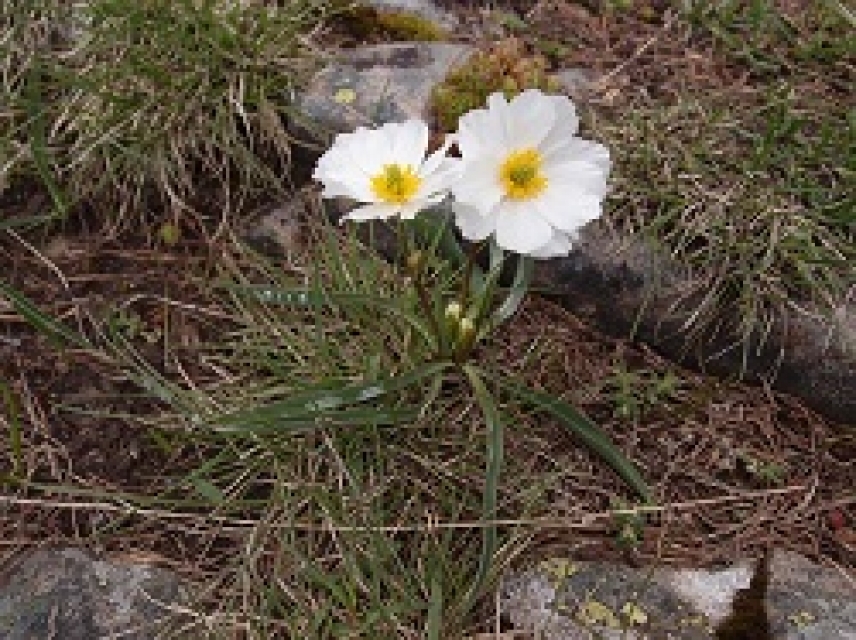Being asexual in the Alps is an evolutionary advantage for survival
An international team explains why specimens of an Alpine flower that reproduce without fertilization are more widespread than their sexually reproducing counterparts
At between 5 and 20 centimeters long, it has white flowers and is the Alpine version of the yellow-flowering Mediterranean buttercup. Ranunculus kuepferi, though fragile in appearance, is one of the plant species that has best adapted to extreme conditions, such as high mountain climate. For thousands of years now, these flowers have decorated the valleys of Europe’s tallest mountains, which are home to more than 30,000 wild species. Learning how this plant adapted and survived could help better understand how living beings respond to changes on Earth. In the case of Alpine buttercups, the key seems to be found in how they reproduce, according to a research project carried out by an international team which included University of Cordoba Botany Professor Diego Nieto Lugilde.
A biochemical process in plants is imitated to curb the reproduction of colon cancer tumor cells
A University of Cordoba research team has developed a tool to erase molecular tags that silence genes involved in tumor growth
Plants have provided a new avenue in curbing tumor growth. On this occasion, it doesn’t involve miracle species or the like, but rather the results obtained by the University of Cordoba BIO301 research team called "Epigenetics and DNA Repair." This research team is affiliated with the Maimonides Institute of Biomedical Research and is led by Genetics Professor María Teresa Roldán Arjona.



